Mira a Phoebe en acción en Instagram @ phoebe_unphrased y YouTube @PhoebeUnphrased .
P. ¿Quiénes son estos alumnos suyos?
 Phoebe es una mezcla de caniche y shih tzu de 4 años que fue rescatada de una manada hace un año. Cuando la adopté, había sufrido un grave abandono y tenía muy pocas habilidades de comunicación y poca experiencia en el mundo. Nunca había salido al exterior.
Phoebe es una mezcla de caniche y shih tzu de 4 años que fue rescatada de una manada hace un año. Cuando la adopté, había sufrido un grave abandono y tenía muy pocas habilidades de comunicación y poca experiencia en el mundo. Nunca había salido al exterior.
P. ¿Cuánto tiempo les tomó presionar su primer botón?
 Debido a la falta de habilidades de aprendizaje previas de Phoebe, le tomó tres semanas de entrenamiento con clicker para que estuviera dispuesta a tocar cualquier cosa con su pata. Pero, como le motiva mucho la comida, una vez que aprendió que presionar un botón le daba control sobre la comida, ¡se puso manos a la obra!
Debido a la falta de habilidades de aprendizaje previas de Phoebe, le tomó tres semanas de entrenamiento con clicker para que estuviera dispuesta a tocar cualquier cosa con su pata. Pero, como le motiva mucho la comida, una vez que aprendió que presionar un botón le daba control sobre la comida, ¡se puso manos a la obra!

P. ¿Qué han revelado los botones acerca de sus alumnos que usted no habría sabido sin ellos?
 ¡Caramba, muchísimas cosas! Aquí tienes algunas sin ningún orden en particular:
¡Caramba, muchísimas cosas! Aquí tienes algunas sin ningún orden en particular:
-
Nuestro otro perro ladra de forma reactiva, y cuando ladra, Phoebe se une a él y también ladra. Aunque no parece estresada en ese momento, ahora que se ha vuelto más sensible, pide abrazos cuando él ladra. Así que me acerco, la levanto, la abrazo y le digo que está a salvo. Nunca habría imaginado que necesitaba esa seguridad solo por el lenguaje corporal.
-
Phoebe definitivamente tiene un gran sentido de la justicia. Si recibe una golosina o algo y nuestro otro perro no, usa sus botones para pedirle que también reciba algo. Me sorprende mucho verla defender a nuestro otro perro a través de los botones.
-
Siempre he creído que los perros viven en el presente, pero Phoebe y sus botones me han enseñado que también piensa en el pasado y el futuro. Por ejemplo, ayer mismo, usó botones para decirme que quiere a mi amiga Diane y se pregunta cuándo la volverá a ver.
-
Phoebe sufre ansiedad por separación cuando no estoy con ella. Y le presta poca atención a mi esposo, esté o no presente. Así que me ha sorprendido darme cuenta, a través de los botones, de que a menudo se pregunta dónde está cuando no está en casa. Sin los botones, ¡nunca habría imaginado que está pensando en él!
P. ¿Qué hace para garantizar que los botones sigan siendo una experiencia atractiva y positiva para sus alumnos a lo largo del tiempo?
 Llevamos un año usando botones. Y, desde aquel primer botón de Golosinas, Phoebe se ha obsesionado con todos ellos. Come, duerme, juega y los aprieta constantemente… tanto que a veces mis amigos y familiares desearían que pudiera desanimarla. Uno de los expertos en comportamiento de AIC sugirió que quizás su total falta de recursos, autonomía y calidad de vida en su anterior situación de acumulación compulsiva la ha llevado a enamorarse de su nuevo mundo de botones. De hecho, en lugar de llamarlo su Mesa de Sonido, ahora lo llamamos su Consultorio de Sonido… ¡y el médico siempre está presente!
Llevamos un año usando botones. Y, desde aquel primer botón de Golosinas, Phoebe se ha obsesionado con todos ellos. Come, duerme, juega y los aprieta constantemente… tanto que a veces mis amigos y familiares desearían que pudiera desanimarla. Uno de los expertos en comportamiento de AIC sugirió que quizás su total falta de recursos, autonomía y calidad de vida en su anterior situación de acumulación compulsiva la ha llevado a enamorarse de su nuevo mundo de botones. De hecho, en lugar de llamarlo su Mesa de Sonido, ahora lo llamamos su Consultorio de Sonido… ¡y el médico siempre está presente!
Sin embargo, algo de lo que soy muy consciente es de asegurarme de que cualquier botón nuevo que añada sea significativo y motivador para ella. Utilizo muchas palabras verbalmente, pero solo pongo botones que sé que querrá usar... porque son suyos para comunicarse, no míos.
P. ¿Cuál es tu momento más divertido con el botón?
 Phoebe tiene un instinto de presa muy fuerte, así que para mi cumpleaños le regalé un circuito de señuelos Swift Paws. ¡Pues Phoebe no me decepcionó! Está obsesionada con el circuito y quiere hacerlo mañana, tarde y noche. Así que, por supuesto, le puse la palabra Swifty en su pizarra para que pudiera pedirlo cuando quisiera. Ahora, apenas me levanto cada mañana, oigo "¡Ayuda, ayuda, ayuda!" en su tablero. Y cuando entro en la sala y le pregunto con qué necesita ayuda, enseguida pulsa "Swifty". Es como si lo hubiera estado pensando toda la noche y ahora fuera una "Emergencia de Swift Paws". ¡Me hace reír cada vez!
Phoebe tiene un instinto de presa muy fuerte, así que para mi cumpleaños le regalé un circuito de señuelos Swift Paws. ¡Pues Phoebe no me decepcionó! Está obsesionada con el circuito y quiere hacerlo mañana, tarde y noche. Así que, por supuesto, le puse la palabra Swifty en su pizarra para que pudiera pedirlo cuando quisiera. Ahora, apenas me levanto cada mañana, oigo "¡Ayuda, ayuda, ayuda!" en su tablero. Y cuando entro en la sala y le pregunto con qué necesita ayuda, enseguida pulsa "Swifty". Es como si lo hubiera estado pensando toda la noche y ahora fuera una "Emergencia de Swift Paws". ¡Me hace reír cada vez!
P. ¿Cuál es el momento más sorprendente que has vivido al presionar un botón?
 El momento más sorprendente del botón fue cuando Phoebe estaba mordisqueando un hueso en su tabla de sonido, pero lo dejó ahí para dar un paseo conmigo. Cuando nuestro otro perro lo vio, se acercó y empezó a mordisquearle el hueso (ya se había terminado el suyo). Antes de los botones, Phoebe habría corrido y habría surgido una pelea, con Phoebe ganando. Pero ese día con botones, corrió hacia su tabla, ladró dos veces, pulsó el botón de ayuda y luego me miró. Aunque ya había usado el botón de ayuda en otros contextos, lo que más me sorprendió fue que, en el fragor de la batalla, eligió una respuesta aprendida (pulsar un botón) en lugar de una respuesta más primitiva (defenderse con los dientes). Dado que la adrenalina estaba alta y el tiempo de respuesta era corto, ¡es bastante sorprendente que eligiera los botones en lugar de ponerse furiosa!
El momento más sorprendente del botón fue cuando Phoebe estaba mordisqueando un hueso en su tabla de sonido, pero lo dejó ahí para dar un paseo conmigo. Cuando nuestro otro perro lo vio, se acercó y empezó a mordisquearle el hueso (ya se había terminado el suyo). Antes de los botones, Phoebe habría corrido y habría surgido una pelea, con Phoebe ganando. Pero ese día con botones, corrió hacia su tabla, ladró dos veces, pulsó el botón de ayuda y luego me miró. Aunque ya había usado el botón de ayuda en otros contextos, lo que más me sorprendió fue que, en el fragor de la batalla, eligió una respuesta aprendida (pulsar un botón) en lugar de una respuesta más primitiva (defenderse con los dientes). Dado que la adrenalina estaba alta y el tiempo de respuesta era corto, ¡es bastante sorprendente que eligiera los botones en lugar de ponerse furiosa!
P. ¿A qué desafíos se ha enfrentado con la enseñanza mediante botones?
 Nuestra mayor fortaleza (la obsesión de Phoebe con sus botones) también fue nuestro mayor desafío. Nuestro diseño original consistía en una mesa de sonido tradicional en el suelo. Y, si bien Phoebe usaba su pata para presionar un solo botón el 25% del tiempo, el 75% restante usaba todo su cuerpo para presionar tantos botones como fuera posible a la vez. Era como llevar a un niño a una tienda de dulces y preguntarle qué quería... a lo que respondía: "¡Todo, lo quiero todo!". Aunque al principio intenté adaptarme lo mejor posible a su estrategia de "salpicar, salpicar y rodar por todos los botones", quedó claro que su método preferido de presionar botones, una "ensalada de palabras", no daría como resultado un sistema de comunicación claro y escalable en el futuro. Así que pasamos más de seis meses de lluvia de ideas, mediante prueba y error, para crear un sistema que fuera más conciso, escalable a una gran cantidad de botones, ¡pero que no desanimara su entusiasmo por su mesa! Como necesitaba resolver este desafío primero, no pudimos agregar ningún botón nuevo durante ese tiempo. Así que tuvimos un retraso de seis meses en aprender vocabulario nuevo. Sin embargo, ahora que lo hemos resuelto, estamos agregando palabras nuevas constantemente. (Si te interesa saber qué hicimos y cómo llegamos a nuestra configuración actual, publiqué en el foro de la comunidad... ¡busca el término "splatting" o "splooting"!)
Nuestra mayor fortaleza (la obsesión de Phoebe con sus botones) también fue nuestro mayor desafío. Nuestro diseño original consistía en una mesa de sonido tradicional en el suelo. Y, si bien Phoebe usaba su pata para presionar un solo botón el 25% del tiempo, el 75% restante usaba todo su cuerpo para presionar tantos botones como fuera posible a la vez. Era como llevar a un niño a una tienda de dulces y preguntarle qué quería... a lo que respondía: "¡Todo, lo quiero todo!". Aunque al principio intenté adaptarme lo mejor posible a su estrategia de "salpicar, salpicar y rodar por todos los botones", quedó claro que su método preferido de presionar botones, una "ensalada de palabras", no daría como resultado un sistema de comunicación claro y escalable en el futuro. Así que pasamos más de seis meses de lluvia de ideas, mediante prueba y error, para crear un sistema que fuera más conciso, escalable a una gran cantidad de botones, ¡pero que no desanimara su entusiasmo por su mesa! Como necesitaba resolver este desafío primero, no pudimos agregar ningún botón nuevo durante ese tiempo. Así que tuvimos un retraso de seis meses en aprender vocabulario nuevo. Sin embargo, ahora que lo hemos resuelto, estamos agregando palabras nuevas constantemente. (Si te interesa saber qué hicimos y cómo llegamos a nuestra configuración actual, publiqué en el foro de la comunidad... ¡busca el término "splatting" o "splooting"!)
P. ¿Cómo decide cuándo presentarle una nueva palabra a su alumno?
 Ésta es una pregunta difícil porque cada estudiante es diferente y cada palabra es diferente.
Ésta es una pregunta difícil porque cada estudiante es diferente y cada palabra es diferente.
Si una palabra es concreta y muy motivadora para Phoebe, suelo añadir un botón rápidamente. Por ejemplo, nos regalaron un nuevo rompecabezas de peluche: una bolsa llena de patatas fritas rellenas de golosinas. Recibí el juguete por correo, lo rellené de golosinas, se lo di y dije "Papas fritas". Inmediatamente puse el botón en la pizarra, froté el peluche contra él y listo. Empezó a usar el botón el mismo día que llegó el juguete por correo. Fue fácil para mí modelarlo y para ella entenderlo sin necesidad de ninguna preparación verbal previa.
Con las emociones, sin embargo, he estado modelándolas verbalmente durante algún tiempo, pero aún no he puesto la mayoría de ellas en botones. Palabras como Feliz, Amor, Emocionado, Preocupado, Seguro, Enojado y Triste emiten diferentes perfiles químicos en el cerebro. Y los perros pueden distinguir esos perfiles de olor. Por lo tanto, quiero asegurarme de que si pongo un botón Feliz, ya sé cómo identificar cuándo Phoebe se siente realmente Feliz (inundación de serotonina) y no emparejar accidentalmente el botón Feliz cuando Phoebe se siente realmente Emocionada (subida de dopamina). Para hacerlo bien, quiero tomarme el tiempo para comprender realmente las emociones individuales de Phoebe y su lenguaje corporal, modelar y probar extensamente mis suposiciones verbalmente, y tener una estrategia en marcha sobre cómo responderé cuando Phoebe presione ese botón de emoción por su cuenta, especialmente si no coincide con su lenguaje corporal. Quiero hacer toda esta planificación antes de poner ese botón.

P. ¿Qué consejo le daría a otras personas que estén interesadas en enseñar a sus alumnos a utilizar botones?
 1. Antes de empezar, toma las clases que ofrece Fluent Pet…Button Bootcamp y Let's Get Them Pressing. Tomé todas las clases educativas que pude de Fluent Pet, y algunas las tomé varias veces. Ahora que AIC lleva varios años en el mercado, hay muchísimas buenas prácticas y cosas que puedes aprender de otros para empezar con buen pie. No te bases solo en lo que ves en redes sociales. En cambio, aprende de la gran experiencia que otros han plasmado en estos materiales educativos. Es fundamental empezar con una base sólida.
1. Antes de empezar, toma las clases que ofrece Fluent Pet…Button Bootcamp y Let's Get Them Pressing. Tomé todas las clases educativas que pude de Fluent Pet, y algunas las tomé varias veces. Ahora que AIC lleva varios años en el mercado, hay muchísimas buenas prácticas y cosas que puedes aprender de otros para empezar con buen pie. No te bases solo en lo que ves en redes sociales. En cambio, aprende de la gran experiencia que otros han plasmado en estos materiales educativos. Es fundamental empezar con una base sólida.
2. Recuerda siempre elegir palabras que motiven mucho a tu alumno. Es muy tentador usar frases que reflejen lo que queremos decir o lo que queremos que digan nuestros alumnos. Pero las frases no son para nosotros. Ya podemos expresar lo que queremos decir con la voz. Las frases deben reflejar lo que nuestros alumnos podrían querer decir.
3. Únete a la comunidad para aprender de los demás. La AIC es un campo relativamente nuevo en lo que respecta a perros y gatos. Hay mucho que podemos aprender unos de otros. Todos somos científicos ciudadanos, de alguna manera. Únete a la conversación y, si te atascas, alza la voz. O, si tienes éxito, comparte tu experiencia ayudando a los demás. ¡Se necesita una comunidad de AIC!

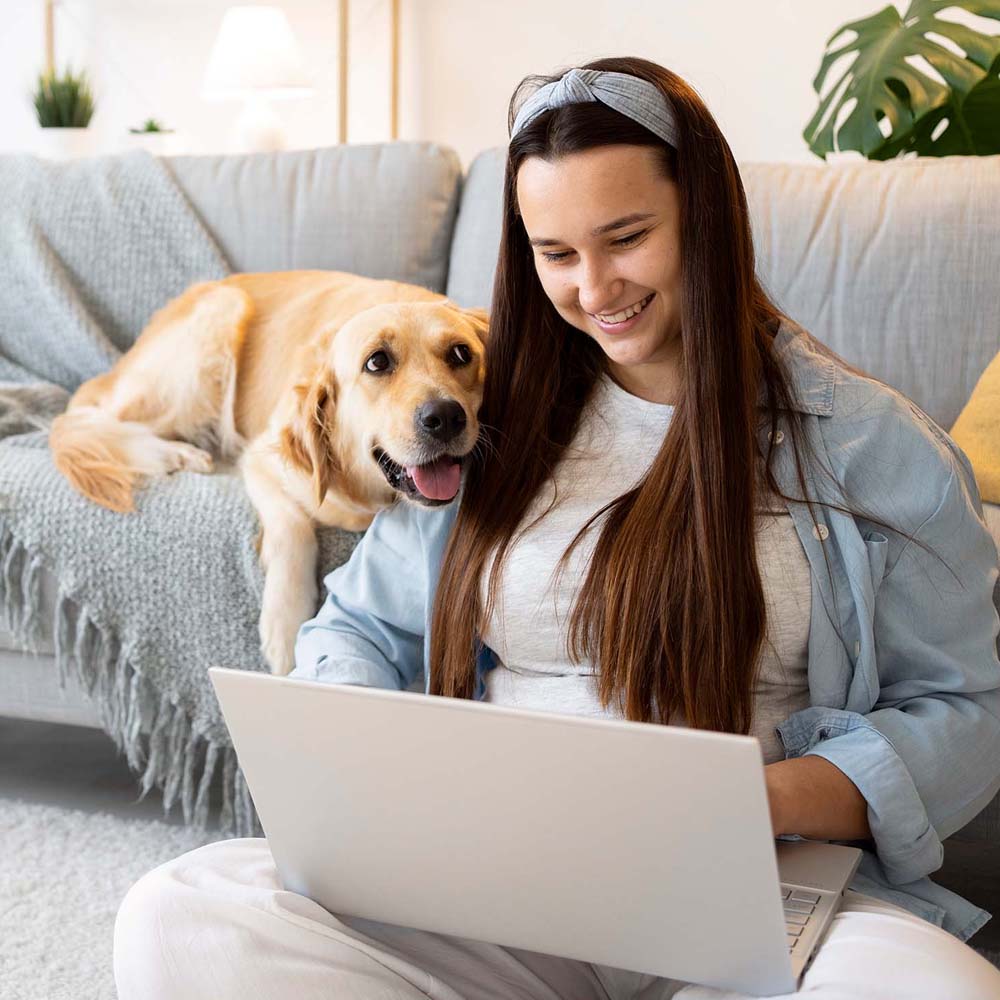
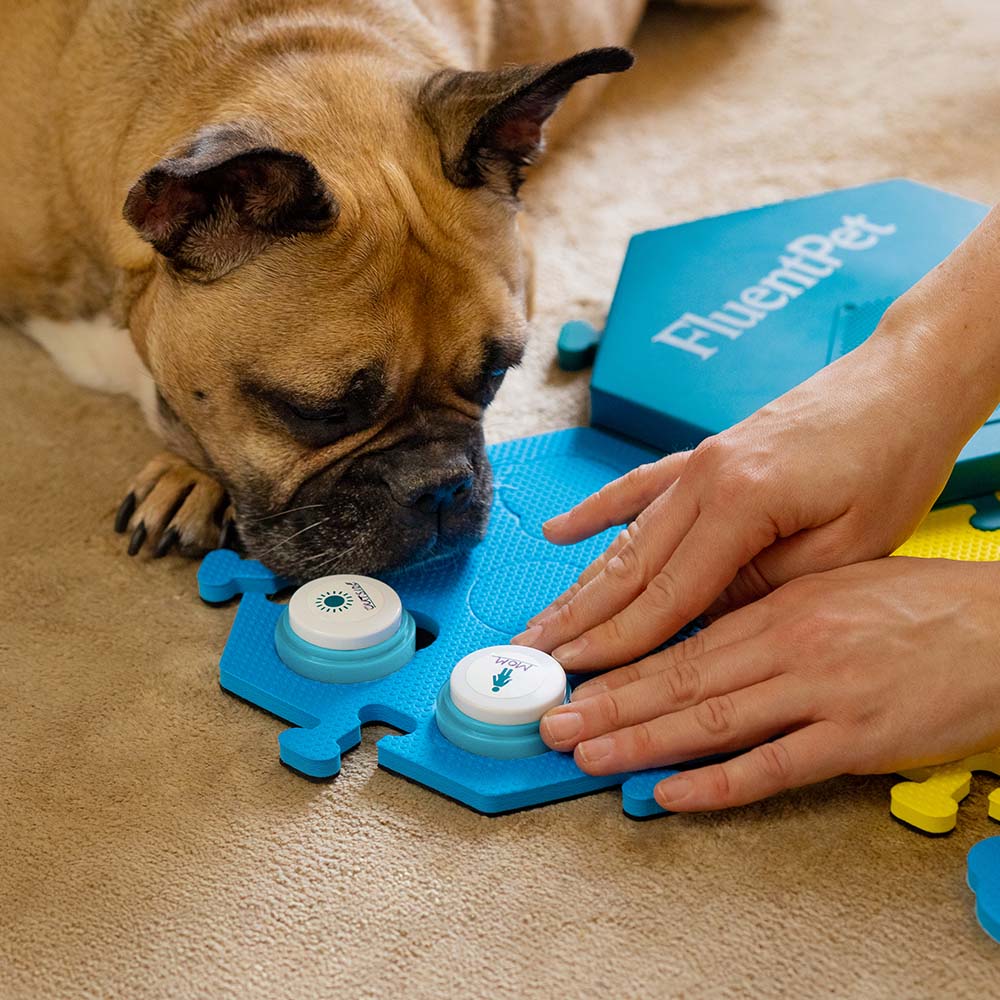
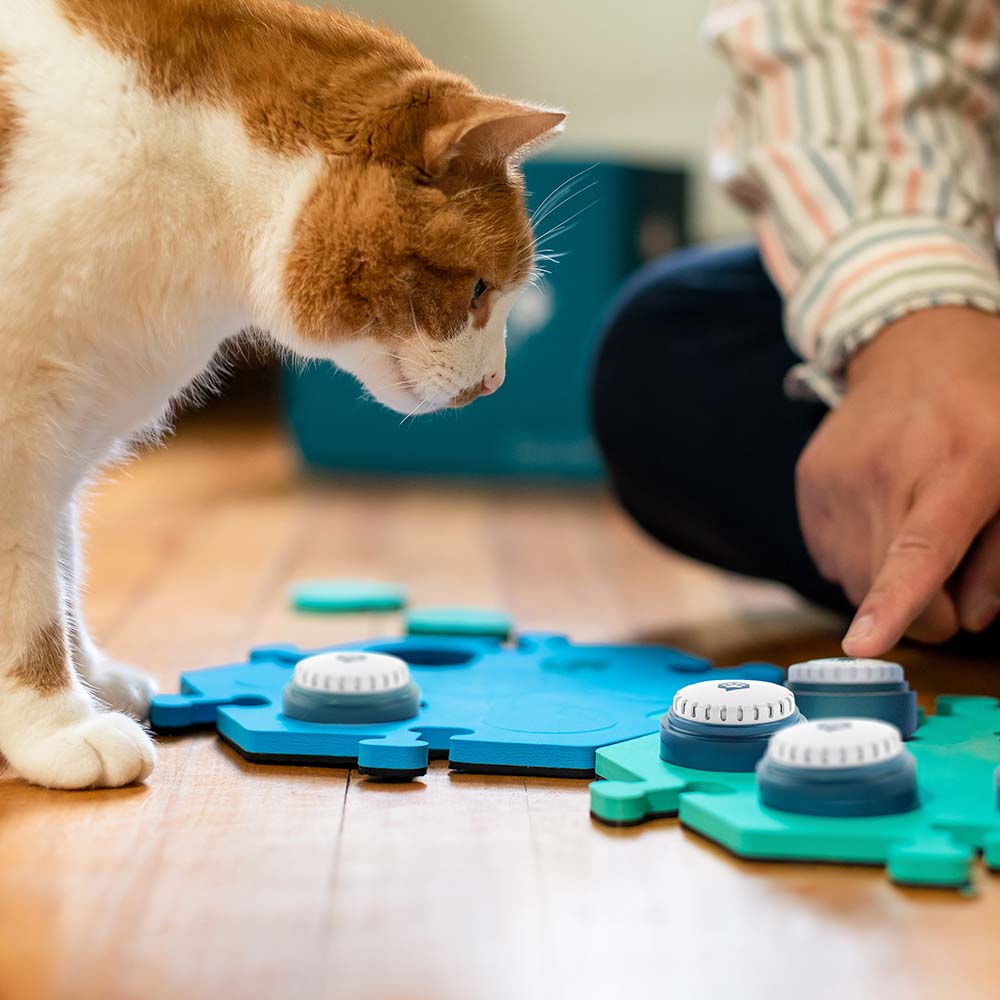
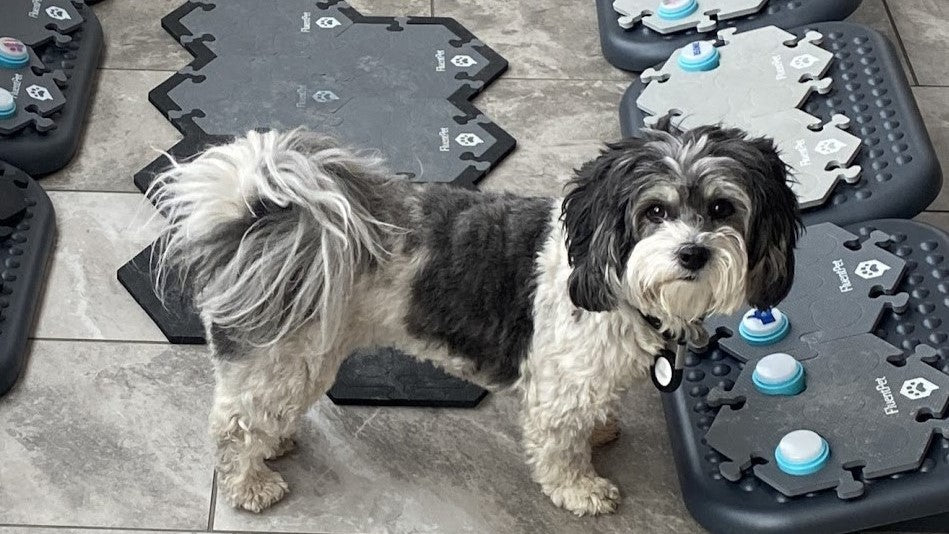


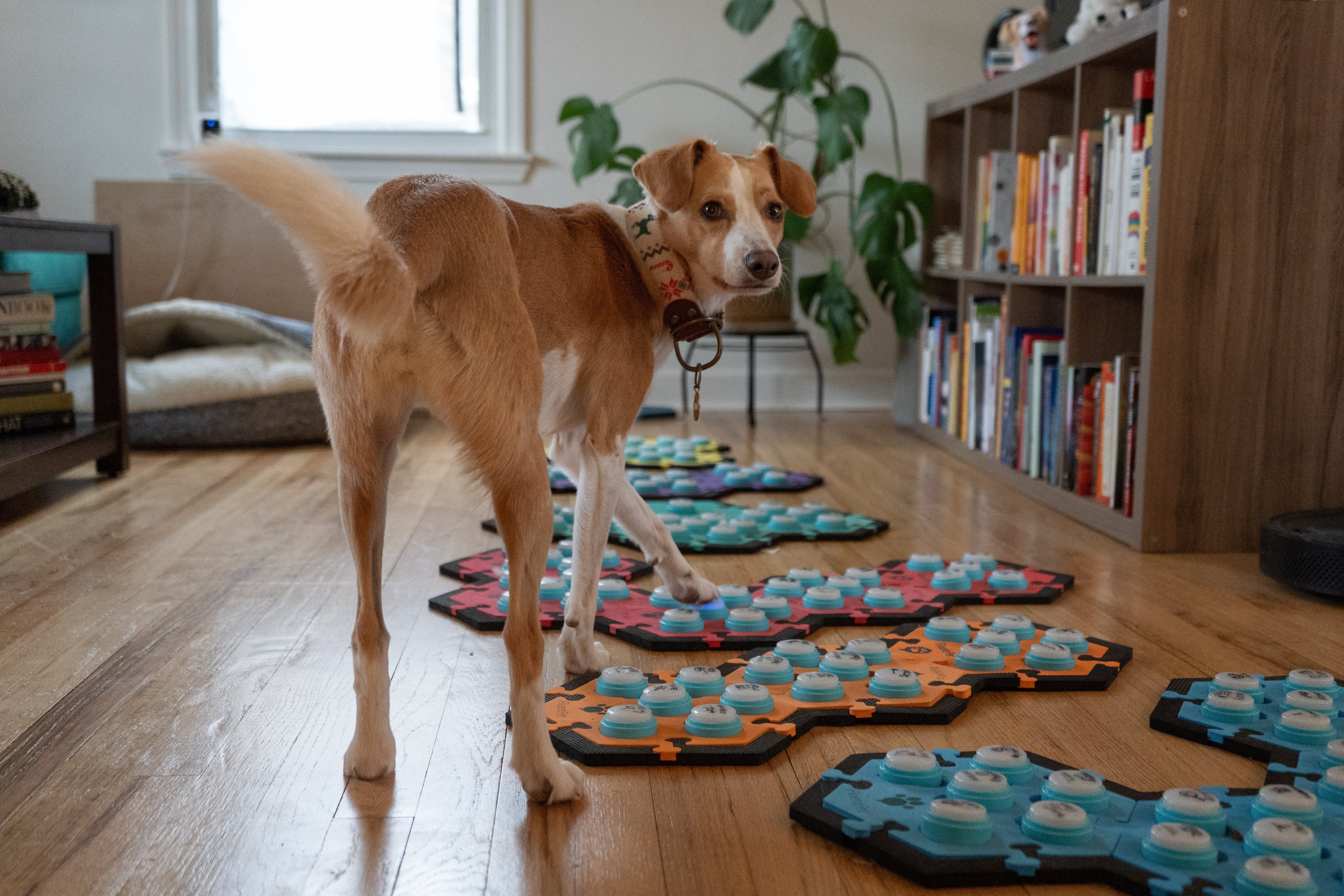
Dejar un comentario
Este sitio está protegido por hCaptcha y se aplican la Política de privacidad de hCaptcha y los Términos del servicio.